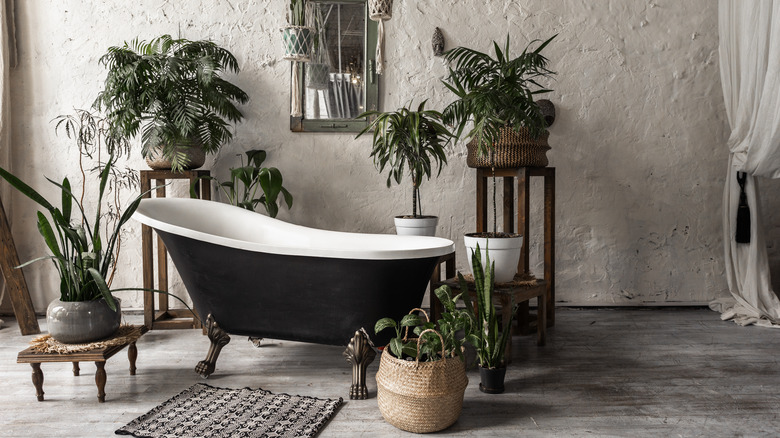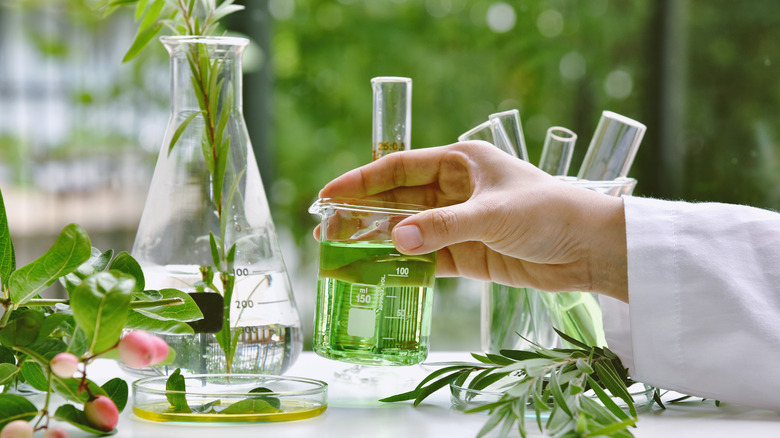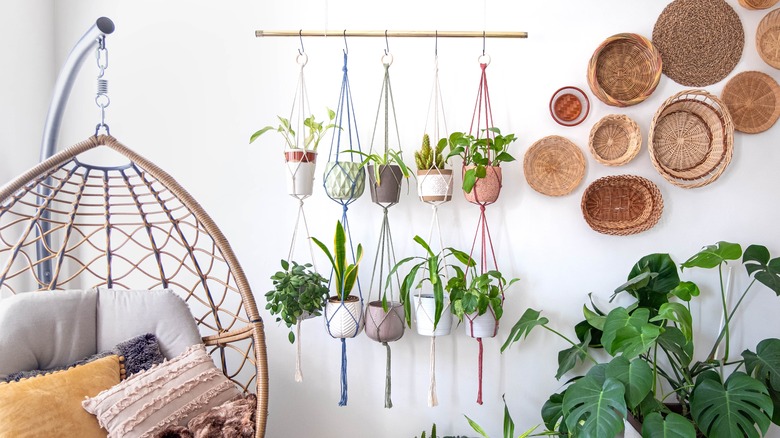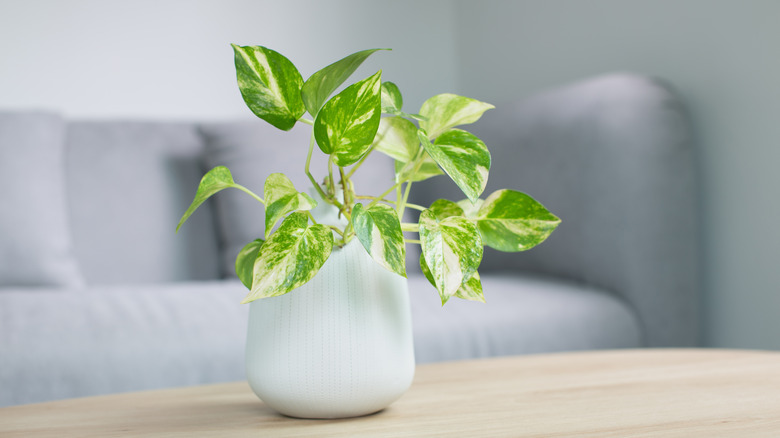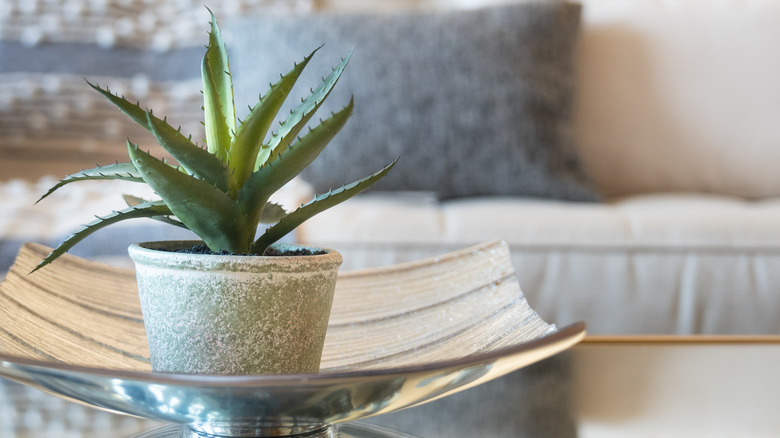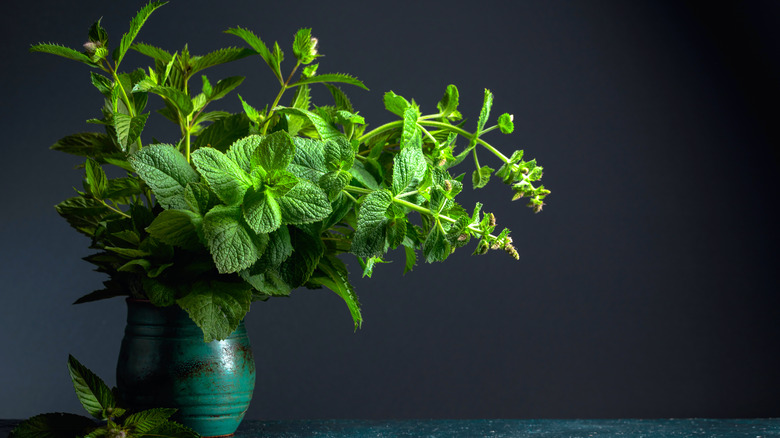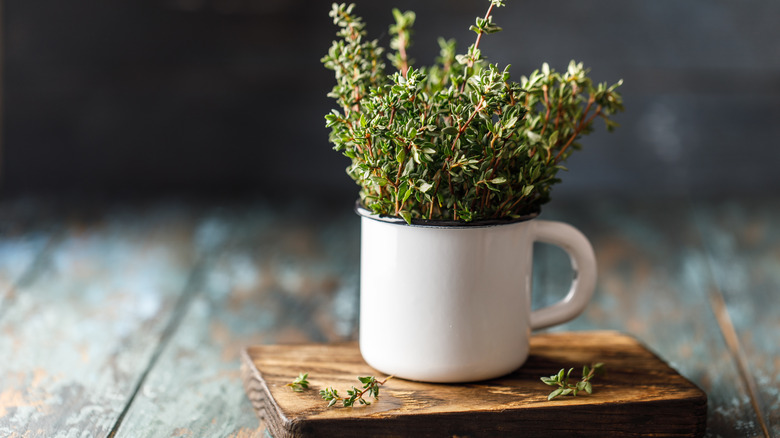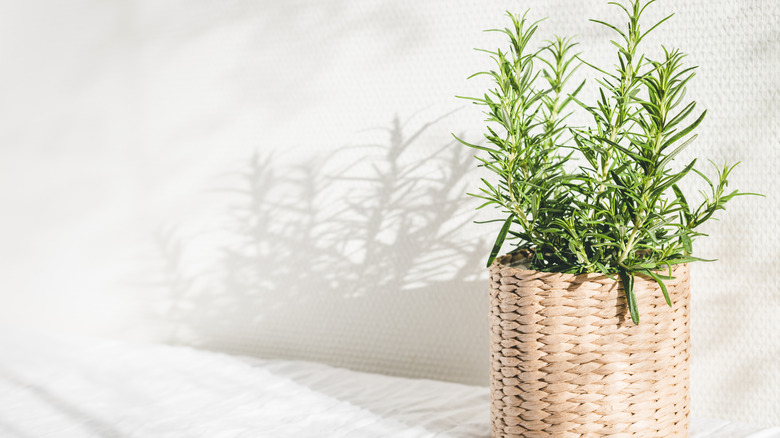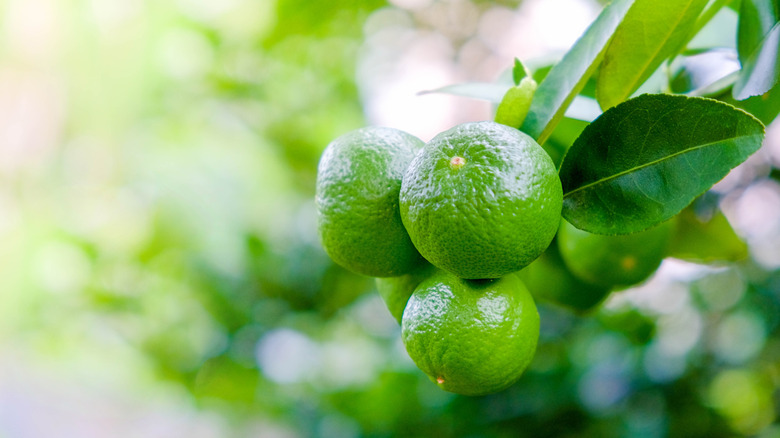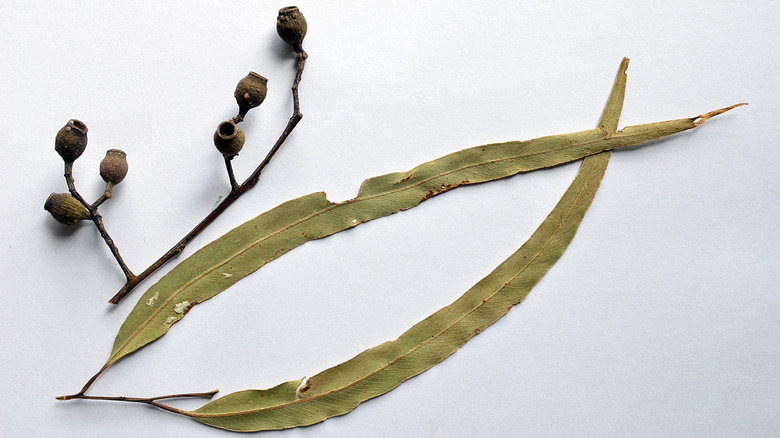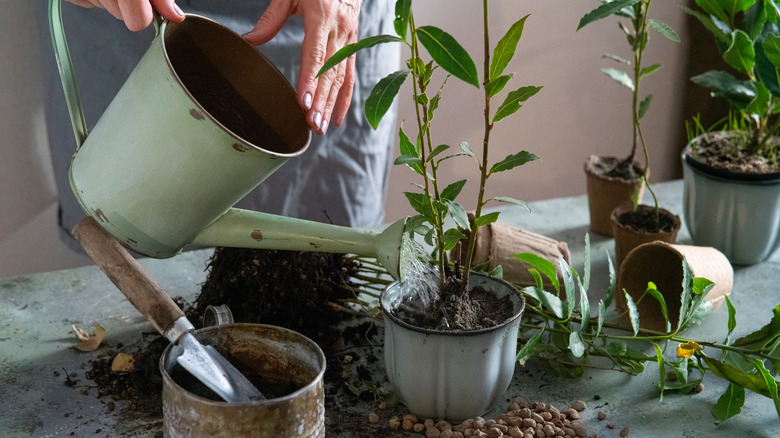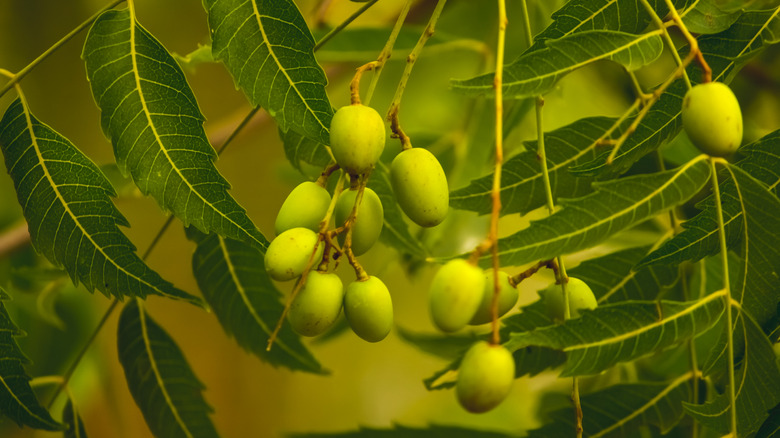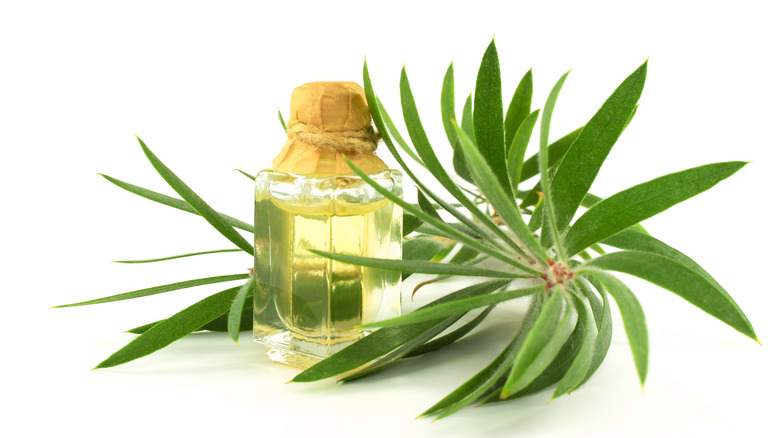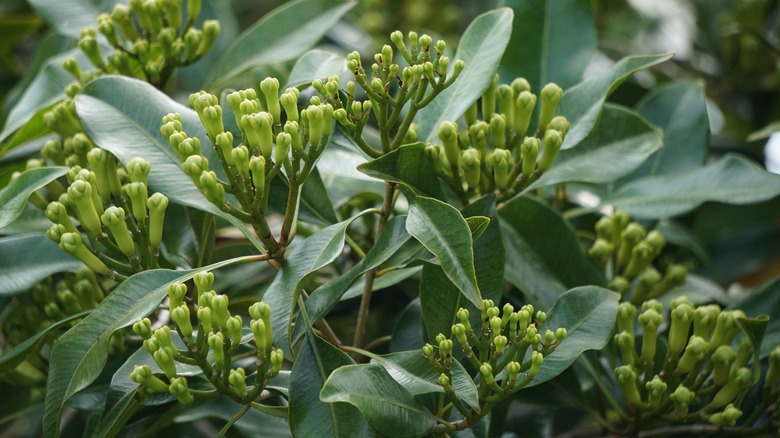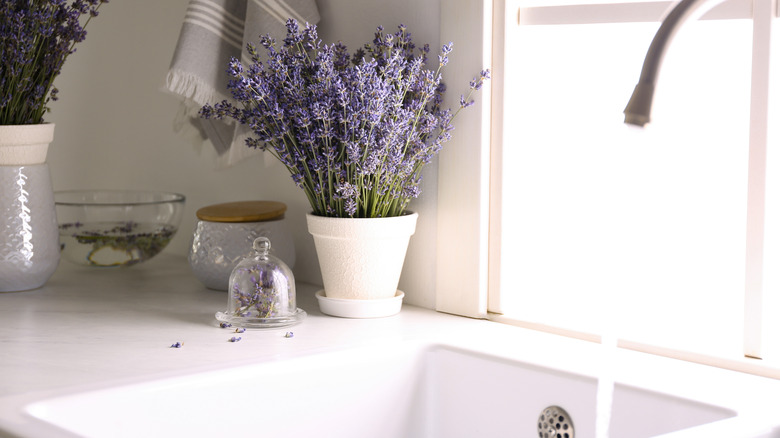Beautiful House Plants That Are Also Useful
According to Royal Botanic Gardens, Kew, there are 25,791 medicinal plants documented in the world today. You might be picturing some tiny air plant from the Amazon rainforest. However, there are beautiful varieties in all shapes and sizes. One example is Brugmansia sanguinea, a stunning variety of Angel's Trumpet that's now officially extinct in the wild. While you probably won't be growing a Brugmansia on your dining room window sill, you can grow the Red Angel's Trumpet for medicinal purposes, an effective plant-based cleaning agent, or something to improve your cooking. Why shouldn't plants be useful?
For all things to be equal, a houseplant needs to be reasonably easy to grow. It should have attractive foliage, and you should be able to grow quantities small enough that a single plant is beneficial (that is, you don't need a crop), and the plant won't get damaged in the process. Here are some beautiful houseplants with great benefits. You just might find the perfect plant for you on this list.
The science of houseplants
A 2019 review of research from the Journal of Exposure Science & Environmental Epidemiology concluded that an unrealistic number of plants is required to achieve the same pollution reduction as buildings' air-exchange mechanisms, per Nature. Of course, this relies on the outside air being relatively cleaner than the indoor air. A 15-year study in New Delhi showed that a 50,000-square-foot building with over 1,200 plants had the city's best indoor air. In this case, plants significantly reduced the toxins workers encountered in the building and offered resulting health benefits (via the International Association of Certified Home Inspectors).
The question of plants' ability to purify air gets complicated quickly. What scientific claims can one make about the benefits and uses of houseplants? WebMD and the Mayo Clinic have good databases of plants, supplements, foods, and other items and their related health claims. There's evidence supporting many uses of plants you might want to grow, and we tried to keep an eye on the evidence while making these recommendations.
Why grow indoors?
Air cleaning and stress reduction are good reasons to raise plants inside your home, but what about culinary, medicinal, and other uses? Proximity can be helpful in cases like culinary herbs. The primary advantage of growing indoors is that tropical plants that can't over-winter outside in most parts of the U.S. will grow happily indoors.
The Raintree Tropical Plant Database features a collection of tropical plants with details about their usefulness in food, medicine, and agroforestry, with information about propagating and cultivating the plants. It's a fascinating way to waste an afternoon and a great way to check out plants you think you might want to grow yourself.
Of course, growing indoor plants can be tricky. Without the buffer of natural sun, water, and soil systems, you'll have to provide suitable amounts of moisture, fertilizer, and light, which requires regular monitoring. It all varies from plant to plant, too. For example, you shouldn't fertilize indoor lavender (via Gardening Know How), whereas citrus trees grown inside require extra fertilization because of the limited root space (via Citrus.com).
Golden pothos
The clean air study from NASA evaluated Pothos, or money plant, as part of a device that filtered air through activated carbon and soil using a fan mechanism. The soil and soil bacteria contributed to the toxin reduction. Pothos was also among the plants (money plant, areca palm, and mother-in-law's tongue) studied in India for 15 years that appear to have improved air quality dramatically. These common houseplants helped improve blood-oxygen levels, eye irritation, respiratory problems, headaches, lung impairments, and asthma. Compared with other buildings in the city, workers demonstrated 52 percent less eye irritation, a third fewer respiratory issues, a quarter fewer headaches, and other benefits (via Ted Talks).
Pothos can thrive in many light levels and is drought-tolerant, making it perfect for growing indoors (via OurHouseplants). It prefers but does not require high humidity and needs minimal feeding during the growing season. Pothos plants require a minimum temperature of 50 degrees Fahrenheit during winter, which should be doable in most households. It grows slowly and can thrive in the same pot for ages.
Aloe
The rest of the plants on our list will require a little more care than Pothos. To get the full benefits from your aloe plant, you'll need to harvest the gel from the succulent leaves, which is a straightforward process, per Healthline. Aloe has many uses in skin care, from skin softening to treating burns and various skin disorders, along with a number of uses as a food additive. It has also been used as an effective laxative, though doctors warn that there's some evidence that the gel causes colorectal cancer in rats. There are a number of potential drug interactions to look out for. As far as anyone knows, the cancer risk only applies to ingested aloe that includes aloin, a sap-like compound in the leaves, and so would not affect skin care products (via Allure).
The aloe vera plant likes bright sunlight and temperatures between 55 and 80 degrees Fahrenheit (via Old Farmer's Almanac). Fertilize no more than once monthly. Water every two or three weeks during the growing season, less during fall and winter.
Mint
Mint is one of those herbs with a wide range of uses: well-known culinary preparations, from candy to tea and other beverages; natural insect repellent; and its astringent and antiseptic properties make it useful for skin care products. It's a snap to grow and ideal for indoor environments because it can get out of control in a garden or flower bed. According to Healthline, the plant is rich in salicylic acid and vitamin A, which are great for skincare, and has antipruritic properties to inhibit itching. Mint's culinary uses include tea, hot chocolate, and desserts. There's also the famous lamb with mint sauce, but we're going with the mint julep (via How To Culinary Herb Garden).
Mint can be a bully in the garden, so it's best to grow the herb from a nursery-propagated plant (via Gardening Know How). Give it as much sunlight as possible and try to prevent the pot from drying out.
Thyme
Thyme is a favorite in the culinary world, whether flavoring dishes directly or infusing herbed butter, oil, or vinegar. It's also a remedy for many conditions, including mild coughs, infections, hair loss, and dementia, although the evidence is sketchy for some of these applications. Benefect uses thyme as a primary ingredient in its botanical disinfectant, which kills 99.9 percent of bacteria and exceeds EPA standards, according to Craftech Restoration. Research recommends residual-type cleaners that leave antibacterial material behind and found that thyme-based cleaners are as effective as traditional cleaners in the home (via Journal of Athletic Training).
For best growing practices, water your thyme grown in pots when the soil is dry to the touch, but take care not to overwater the roots. The thyme plant benefits from five to six hours of sunlight daily. Fertilize lightly with a balanced liquid fertilizer, or avoid fertilizing altogether (via Balcony Garden Web).
Rosemary
It's hard to get more bang for your buck than with rosemary. This beautiful, perennial herb smells fantastic and has antiviral, antifungal, and anti-bacterial properties, making it a common ingredient in natural cleaning products. It also stands out because of other properties that promote metabolism, blood clotting, immune system health, stress reduction, cognitive health, cancer reduction, and others, per WebMD.
For use in the home, rosemary is particularly suited to culinary and DIY skincare uses. To get the benefits of eating this wonder herb, you'll want to finely chop the leaves, as they don't always fully soften when cooked (via the How To Culinary Herb Garden). Rosemary leaves can make a great gentle exfoliant, on top of the herb's antimicrobial advantages (via Medium).
Give your rosemary herb plant as much sun as you can. It can tolerate cool temperatures for a Mediterranean herb, and its soil should be nearly dry to prevent root rot. You can grow rosemary from seed or new garden center plants. The smaller Blue Boy variety is ideal for growing indoors in pots.
Lime
While a bit more off the beaten path than rosemary, at least for most gardening zones in the United States, lime trees are pretty easy to grow indoors. Plus, there appear to be good cleaning-related reasons for growing your own limes. The Citrus genus is known for its pharmaceutical and cosmetic uses, per MDPI. A 2018 study found lime juice and commercial disinfectants effective for eliminating Pseudomonas aeruginosa and methicillin-resistant Staphylococcus aureus (MRSA) and indicates that lime is effective against other microbes (via MDPI). The citric acid and ascorbic acid (vitamin C) in citrus fruits can be effective cleaning agents where typically alkaline soaps are not (via Limoneira). There's good evidence that lemons have even more medicinal benefits, but they can be a little more finicky to grow indoors.
So what's the scoop on how to grow and care for your lime tree? They need loamy, well-drained potting soil, a large pot, and six to eight hours of sunlight each day (via Citrus.com). Be careful not to over-water them, but do fertilize liberally. You can harvest five to six months after blooming!
Lemon Eucalyptus
While not part of the citrus family, lemon-scented gum eucalyptus is a tree that can grow to 100 feet outside. Luckily, it assumes a more compact, attractive form indoors. There's rampant confusion about using lemon eucalyptus as an insect repellent. It is effective for repelling mosquitoes and deer ticks but primarily in a preparation that requires heating, agitation, and decantation of Eucalyptus citriodora essential oil, which is challenging to manage at home, per ScienceDirect. This process produces a chemical called PMD, which is almost as effective as a repellent against mosquitoes as DEET (via Hebe Botanicals). However, the unmodified essential oil from lemon eucalyptus is also effective against mosquitoes. It simply must be applied more often.
Whether grown from new plants or cuttings, pick the pot you want the tree to live in and start your sapling there because lemon eucalyptus doesn't like to be repotted (via Tom's of Maine). Ideally, the average temperature for lemon eucalyptus should be 77 degrees Fahrenheit, so find a sunny spot with about eight to 10 hours of light per day to keep the temperature close to that. Don't over-water, but mist the leaves occasionally to meet humidity requirements. Feed with potassium-rich fertilizer (via Gardenine).
Bay Laurel
Most cooks have spent a few minutes fishing bay leaves out of a soup or stew, and as with thyme stems or rosemary sprigs, they're happy to do it because of the delicious flavor imparted to dishes. Bay laurel has also been proven effective in repelling insects under certain circumstances and has several purported cosmetic and health benefits, per WebMD. Its antibacterial properties are effective against Staphylococcus aureus, E. coli, and H. pylori. It lowers blood sugar, and there's some evidence that it slows the growth of certain types of cancer cells. You can use bay leaves to repel household pests, especially from the pantry (via JP Pest Services). The simple presence of a bay leaf is effective at warding off flies, mice, moths, and roaches.
Use potting soils or coconut coir and a plastic or fiberglass pot for bay laurel (via Herbs at Home). The plant does well in full sun to partial shade and can handle typical indoor temperature ranges. Like the lemon eucalyptus, bay laurel benefits from occasional misting to increase humidity. Fertilize twice per year during the growing season.
Neem Tree
Organic gardeners are familiar with neem oil because of its insecticidal properties. This miracle plant also has applications in treating dental problems, gingivitis, and lice. The tropical tree can be challenging to grow indoors, at least at first, but it grows into an attractive houseplant with long green leaves and a sweet smell. Long known for its properties as an insecticide and dental treatment, neem has recently been studied and shown promising results for treating chronic lymphocytic leukemia (CLL), per Taylor & Francis Online.
Start neem from seed in a high-quality potting mix and fertilize it regularly for best results (via Discover Neem). Give the plant as much sunlight and warmth as your can, even keeping it outdoors during the summer months, if possible. Avoid over-watering because neem trees cannot tolerate soggy soil. However, this tree does like the occasional misting. Fertilize about once per month during spring and summer.
Tea Tree
It's difficult to imagine that anyone hasn't heard of tea tree oil and its uses, including acne treatment, athlete's foot, dandruff, and (when combined with lavender oil) lice. It's easy enough to grow this tropical tree indoors, but it might prove relatively more challenging to extract its beneficial oils. Of the many potential uses for tea tree oil, the Mayo Clinic describes several for which there is substantial evidence. For example, it's effective against athlete's foot and dandruff, and some evidence suggests it can relieve acne. When combined with lavender oil, tea tree can also be effective at treating lice.
To grow tea tree (also known as melaleuca) successfully indoors, place it in your sunniest spot and give it plenty of water, as this plant thrives in moist soil and humidity (via Gardening Know How). Feed this evergreen year-round with an organic fertilizer. Since tea tree is toxic when ingested, keep an eye on children and pets when they're around the plant.
Clove
Depending on your age, cloves might call to mind memories of toothaches, ham, and cigarettes. This plant has antiseptic, analgesic, and antioxidant properties that make it worth considering as a houseplant. Clove can protect liver function by fighting against cirrhosis and fatty liver disease, per Mary Ann Liebert, Inc. It contains Eugenol, a powerful antioxidant with therapeutic potential for inflammatory issues (via Hindawi). It's also effective at treating dental problems and sore throat.
The first thing you should know about growing clove trees is that it's an investment. You'll typically wait six years before your tree flowers (via Gardening Channel). Should you encounter the opportunity to buy a tree that has already seen a few years, take it. If you're not scared of a challenge, here are the basics. A greenhouse or conservatory is ideal for growing clove trees indoors. These plants like light watering and frequent misting. Ensure they are in well-drained potting soil. Try to keep temperatures between 64 and 80 degrees Fahrenheit (via Gardening Tips).
Lavender
Lavender has become so popular as a scent that the artificial versions might be more familiar than the real thing. However, the real plant is far better than a scented candle or hand lotion. According to the Mayo Clinic, aromatherapy with lavender and other essential oils reduces stress and anxiety. A review of scientific literature conducted by Pain Research and Treatment demonstrates that aromatherapy can also help treat pain (via Hindawi).
That's not all lavender can do. The plant is also effective for treating alopecia and hair loss (via JAMA). If that's not enough, the plant can help you avoid diseases from your pet turtle (via KoreaMed Synapse), and it appears to reduce falls in nursing homes (via the American Botanical Council). Whew.
Can you grow lavender indoors? Well, sure. Place the plant next to a south-facing window for light and let its soil dry between waterings (via Gardener's Supply Company). Lightly fertilize every four weeks, but fertilizing is not necessary. Lavender can handle a wide range of temperatures.
